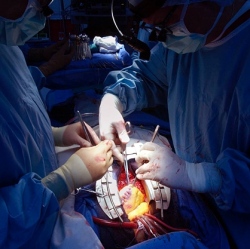
Most human tissues do not regenerate spontaneously. But now, researchers have identified an entirely new approach to enhance normal tissue growth, a finding that could have widespread therapeutic applications, according to a team led by investigators at Beth Israel Deaconess Medical Center (BIDMC) and Dana-Farber/Boston Children’s Cancer and Blood Disorders Center.
Tissue regeneration is a process that is not fully understood, but previous research has demonstrated that endothelial cells (lining the insides of small blood vessels) play a key role in tissue growth. It is also known that these endothelial cells generate chemical messengers called epoxyeicosatrienoic acids (EETs), which stimulate blood vessel formation in response to tissue injury.
In this new research, first author Dipak Panigrahy, MD, an investigator in at the BIDMC Center for Vascular Biology Research, and his colleagues wanted to find out how EETs might participate in organ and tissue regeneration. To answer this question, they created seven different mouse models. The models focused on liver, kidney and lung regeneration; wound healing; corneal vascularization; and retinal vascularization.
“We used genetic and pharmacologic tools to manipulate EET levels in the animals to show that EETs play a critical role in accelerating tissue growth, providing the first in vivo demonstration that pharmacological modulation of EETs can affect organ regeneration,” explains Panigrahy, an Instructor in Pathology at Harvard Medical School. Administering synthetic EETs spurred tissue growth in the research models; conversely, lowering EET levels — by either manipulating genes or administering drugs — delayed tissue regeneration.
